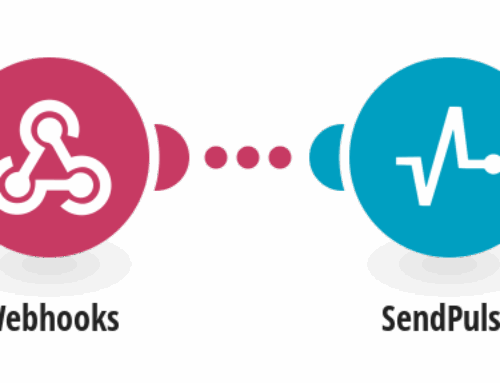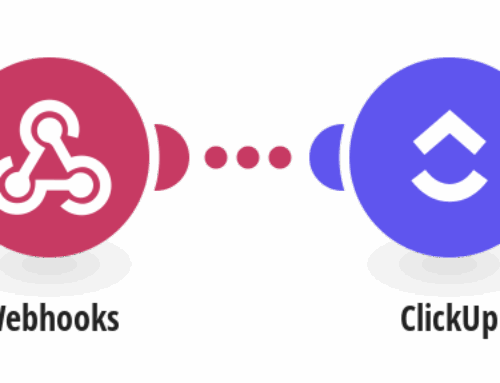When the digital economy took off in the 2000s, it created a seismic shift in how businesses operate. Instead of needing a full-time business associate to run operations, a growing number of companies are now able to simply program software to run their businesses.
To make this possible, software developers created so-called low-code technologies that allow users without any programming experience to build software applications from scratch and streamline business processes through automation. The low-code revolution has been so successful that today more than 90% of new B2B software products are built using the same technology.
While most low-code tools take the same approach when it comes to automating business processes, not all are created equal. Understanding which type is right for your company will depend on several factors including your current operations, financial abilities, and available time. This article outlines some key questions you need to ask yourself before investing in a low-code tool.
The Rise of Numerous Low-code Automation Tools
As businesses saw the benefits of low-code automation technologies, a large number of vendors entered the market offering their low-code products. Unfortunately, low-code vendors are now only too quick to simply mimic each other by offering the same low-code tools as their rivals.
This makes it hard for customers to choose an automated solution that fits their specific needs. This issue is particularly acute within the low-code automation tools space where there are just as many low-code automation tools as there are different low-code technologies.
That means that customers need to ask a lot of questions and take a lot of time to determine the best low-code automation tool for them. Unfortunately, most low-code vendors don’t provide much assistance with this process.
Why Having a Low-code Automation Tool is Important
The success of low-code automation technologies coincides with a growing demand for digital transformation. Whether it’s improving customer experience, growing sales or simply reducing costs, most businesses are now striving to reengineer their operations through automation. However, not all low-code automation tools are created equally. This is why choosing the right low-code automation tool is important. First, you need to consider why you want to automate. For example, if the goal is to reduce time spent on manual tasks and help employees focus on more strategic tasks, you can use low-code automation tools to send emails or create reports automatically. Alternatively, if your company wants to completely automate business operations, you’ll need to choose a low-code tool that is well-suited to the task at hand.
Questions You Have to Answer Before Picking

What Do You Need to Automate?
Automating business processes allows you to optimize operations to increase efficiency and reduce costs. This can result in a lower total cost of ownership for your business. It can also make it easier for you to scale as you expand your operations. Automated business processes can be broken down into three key areas:
Business Process Optimization (BPO)
This is where you create rules in your tool that allow users to automate core business functions, like payments, approvals, and invoices.
Data Management
This is where you collect, store and manage data to make it accessible to your software.
Business Intelligence
This is where you collect data from multiple sources and use it to create reports, dashboards, and other types of analysis.
How Much Financial Capital Do You Have?
When it comes down to it, the low-code platform you choose is a big investment. Before you spend money on a low-code platform, you should determine how much financial capital you have available to invest in automation. Financial capital refers to the funds available in your business, such as cash and assets.
Once you know how much financial capital you have, you can decide how much you want to allocate towards low-code. You can either choose to purchase the full suite of low-code tools or pick and choose which pieces you want to invest in. The more financial capital you have, the more expansive your low-code automation platform can be.
A small business with just a few million dollars in assets can probably get away with low code that’s limited to just a few key pieces of software. However, a company with more than $50 million in assets can probably afford to invest in a full low-code suite, as it can cover much of the business operations.
Which Type of User Should Use Your Tool?
Creating a low-code application that’s suitable for the entire company requires a different approach from low-code technologies that are targeted toward specific industries. If your company operates in multiple industries, you should consider building low-code applications for each.
This will allow you to customize the software to the needs of each industry as well as streamline operations across your entire business. There are also low-code tools that allow you to customize their software to your specific needs. For example, they may provide low-code add-ons such as a payroll solution or CRM tool.
If your company is relatively small, you may decide to outsource some of your operations to low-code automation. In this scenario, low code is useful for automating the core business functions, while you stay hands-on with your core operations.
How Competitive is the Market?
Like all technology products, low-code automation platforms face increased competition today than in the past. However, the degree of competition varies significantly depending on the type of low-code technology you choose. Software as a Service (SaaS) low-code technologies are particularly vulnerable to market saturation because they’re almost entirely dependent on the user.
With these low-code tools, your company depends on the company selling the low-code software to make sure it keeps growing and profitable. If the market saturates or the business model fails, your entire investment in low-code will be at risk. Low-code on-premises technologies, however, are less vulnerable to market saturation.
Because you host the software in-house, it’s more difficult for your investment to fail. SaaS low-code technologies are also vulnerable to market saturation, in that their entire business model is based on the user. However, low-code on-premises technologies are less vulnerable to market saturation as it’s more difficult for your investment to fail.
Which Low-code Platform is Right For You?
From the moment a low-code platform goes live, you’ll start realizing its potential for improving operations. However, it’s important to remember that this potential won’t be realized right away. You’ll need to experiment with different combinations of low-code applications to find the ones that work best for your company.
If you haven’t used low-code software before, don’t rush into it. It’s important to first test the waters and gauge the level of interest in low code among your employees. If low-code is well-received, you can then start experimenting with different low-code applications.
One low-code automation tool won’t fit all companies, and you need to experiment with low-code to find which one works best for you. Try a low-code application that helps with BPO and data management, a business intelligence tool, and a CRM.
Start Automating With Zapier
Zapier is a cloud-based service that allows users to connect apps and automate actions between them. This type of automation is particularly useful for businesses that have a lot of apps in use.
For example, if you manage a food delivery service, you’ll almost certainly have several apps related to logistics. In this case, it’s helpful to build an app that automatically notifies employees when an order has been delivered. Similarly, if you run a construction company, you’ll likely use some apps related to project management. This can include scheduling, invoicing, and time tracking.
Final Words
Businesses that want to adopt the benefits of automation quickly need to rethink how they approach the task. Currently, most low-code automation tools are designed for non-programmers. That means that to benefit from them, you need to first get trained as a programmer.
That’s a significant challenge for many organizations that simply don’t have the budget or time to invest in this type of skill. Fortunately, several low-code automation tools don’t require programming experience. These can provide a low-cost and straightforward way to automate business processes without needing dedicated IT resources.
There are many low-code platforms available, but some are better suited for different use cases. Before you choose a low-code platform, you should determine which low-code platform is best for your company’s needs.
Articles You Might Want To Read:
Learn How to Get Started With Low Code Automation Tools
The Impact of Low Code Automation Tools on Different Industries








